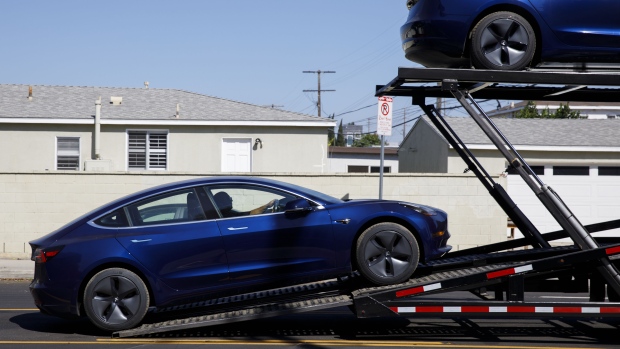Apr 12, 2019
Tesla just made it harder to buy its cheapest US$35,000 electric car
, Bloomberg News

Tesla Inc. (TSLA.O) announced a series of changes to its vehicle lineup and pricing, including making it tougher to buy its newly available entry-level US$35,000 car.
All Tesla vehicles now come with the Autopilot driver-assistance system as standard, the company said in a blog post late Thursday. The Model 3 with Standard Plus battery range used to cost US$37,500, plus US$3,000 for Autopilot. It now costs US$39,500 with Autopilot included.
And a standard Model 3 costing US$35,000 just became harder for customers to actually order. Deliveries of the vehicle at that price point -- the big promise of the Model 3 when it was first unveiled in March 2016 -- are just beginning this weekend. Customers who want this version from now on won’t be able to get it from Tesla’s online ordering menu -- they’ll have to call or visit a store instead.
Tesla’s constantly shifting approach to its lineup and retail strategy has rattled investors and stoked confusion. Ten days after signaling an almost complete withdrawal from physical stores, the company backtracked and said more locations would stay open than planned. The carmaker is now backing away from its online-only ordering approach with the standard Model 3.
“This latest announcement is further evidence that 2019 will be a bumpy year for Tesla,” said analyst Gene Munster of Loup Ventures. “They’ll eventually get the formula right.”
Leasing, Sharing
Tesla is also offering a Model 3 lease for the first time, though with a big caveat. Customers won’t have the option to buy the car at the end of the lease because the company plans to use the vehicles in a forthcoming Tesla ride-hailing network, according to the blog post.
On its ordering website, Tesla’s default options are for customers to make a US$3,000 down payment and spend a total of US$4,199 at signing of a three-year, 10,000-mile annual lease. The monthly payment due on that basis is US$504.
Chief Executive Officer Elon Musk first talked about his vision of a Tesla shared-vehicle fleet when he unveiled his Master Plan Part Deux in July 2016. After the company scheduled an event later this month for Musk and other executives to tout Tesla’s self-driving technology, the CEO hinted at the plan again.
In responding a follower on Twitter encouraged Tesla owners to buy a product that covers up a camera over the rear-view mirror of their cars, Musk, 47, confirmed for the first time that the purpose of the camera was to record video when owners put their car on the network.
Tesla shares rose 0.6 per cent to US$269.98 as of 8:50 a.m. Friday in New York, before the start of regular trading. The stock was down 19 per cent this year through the close Thursday.





